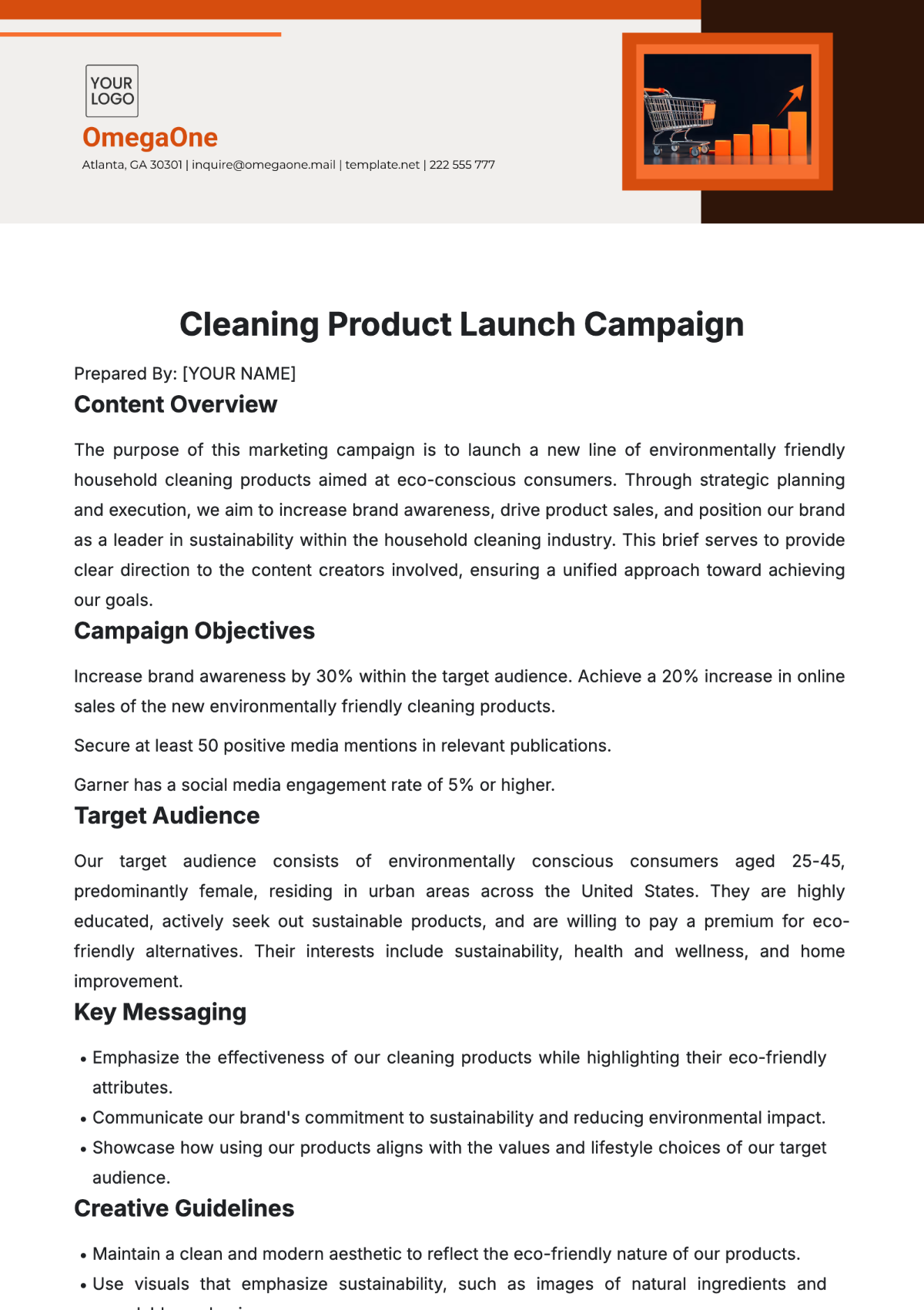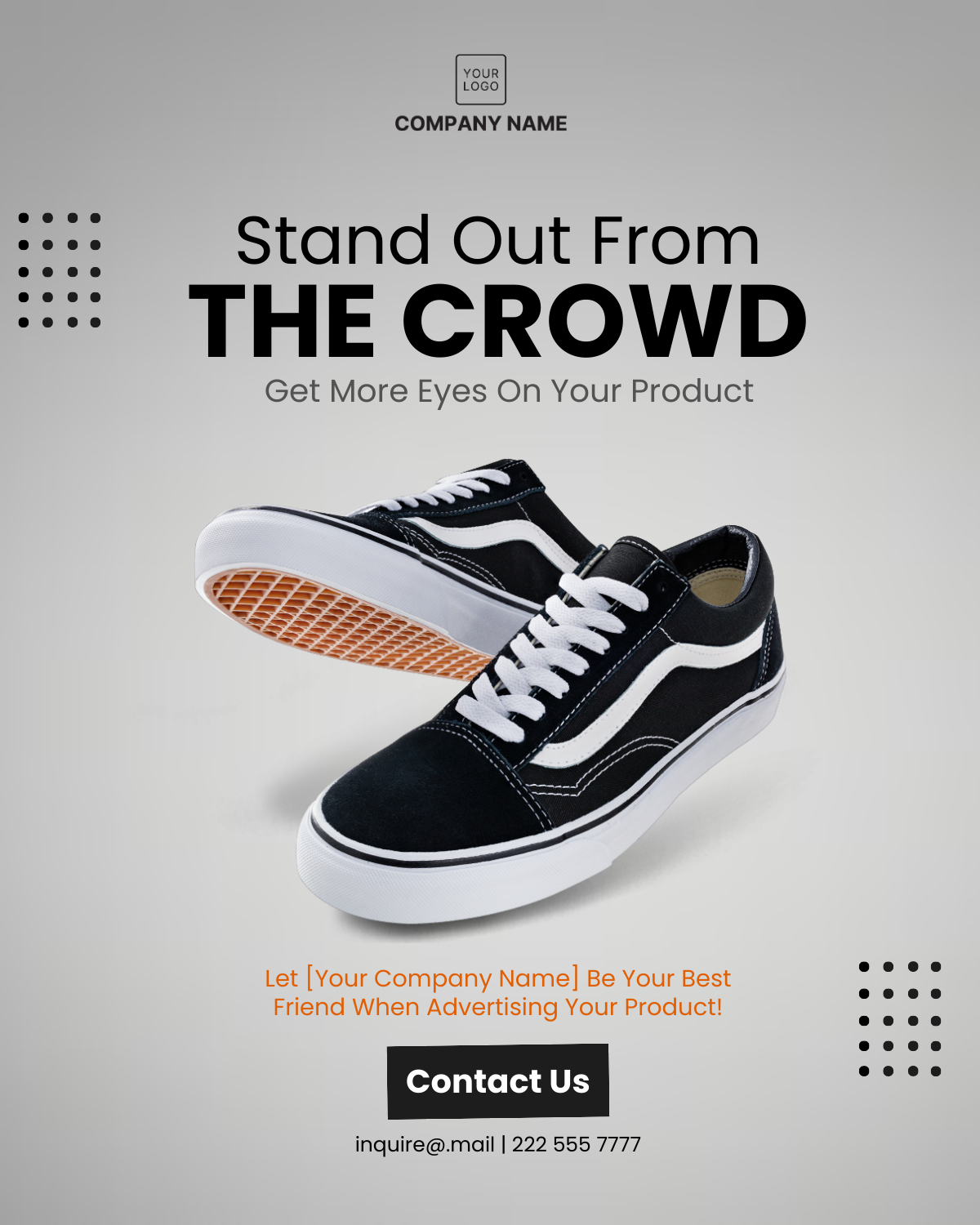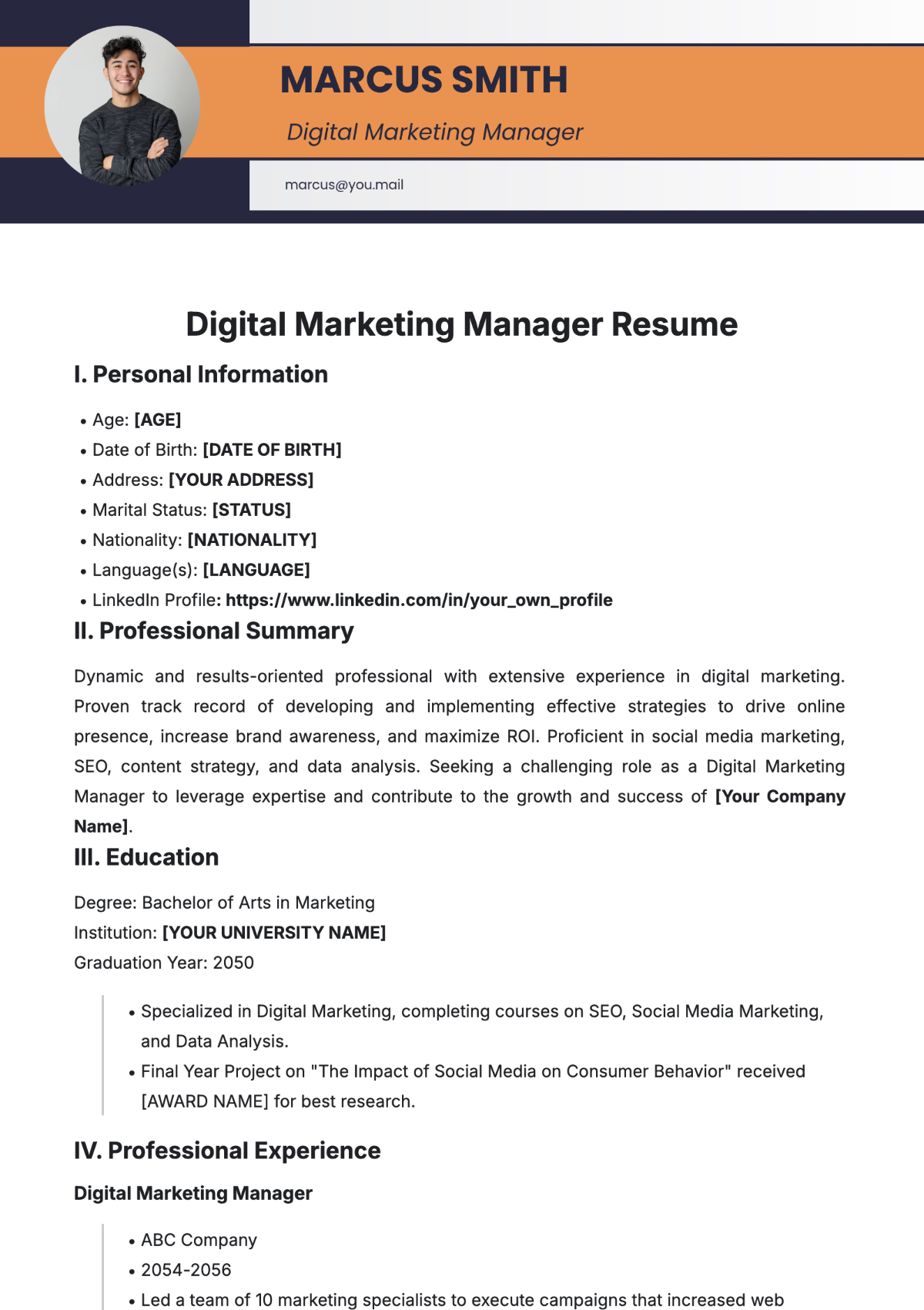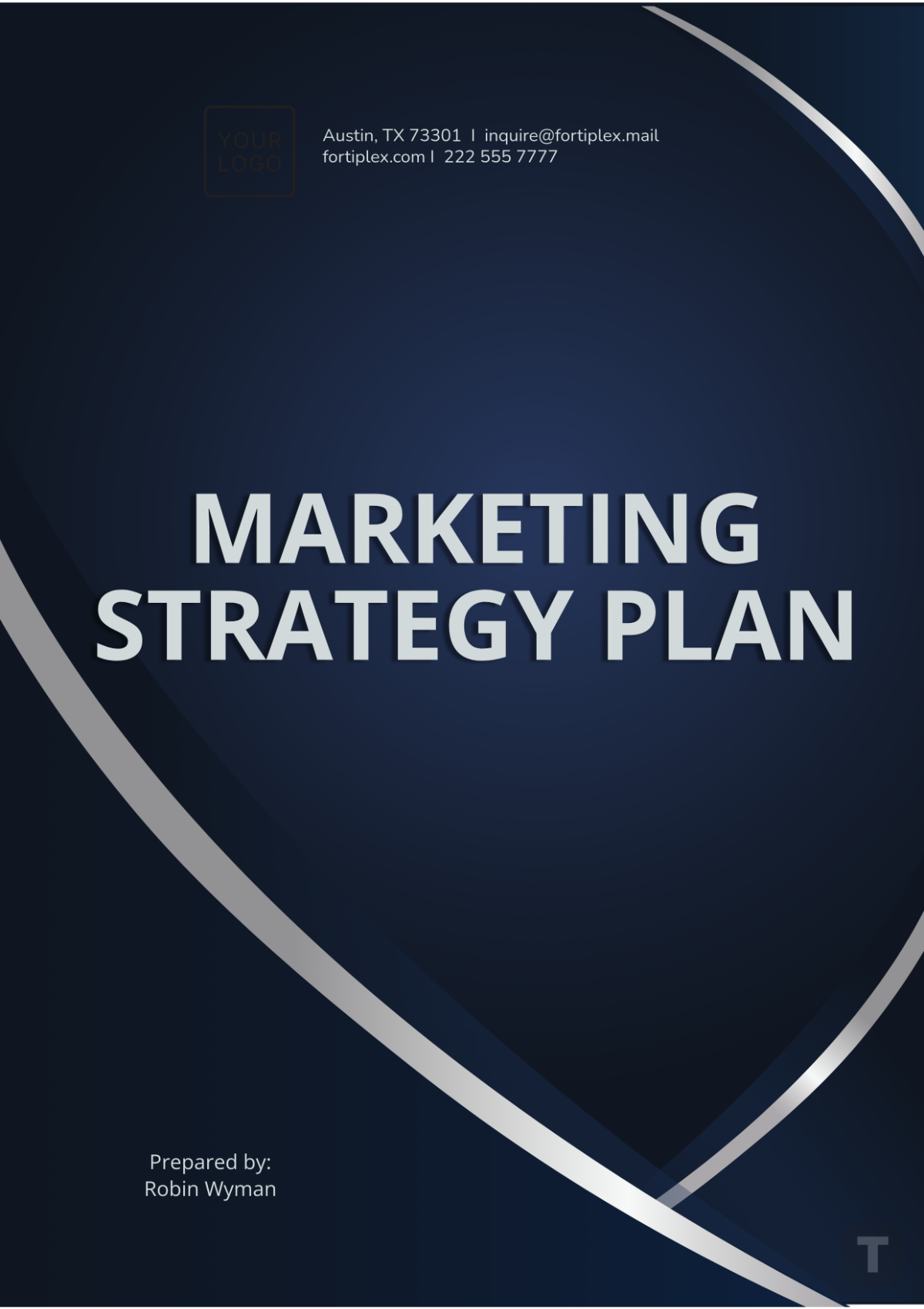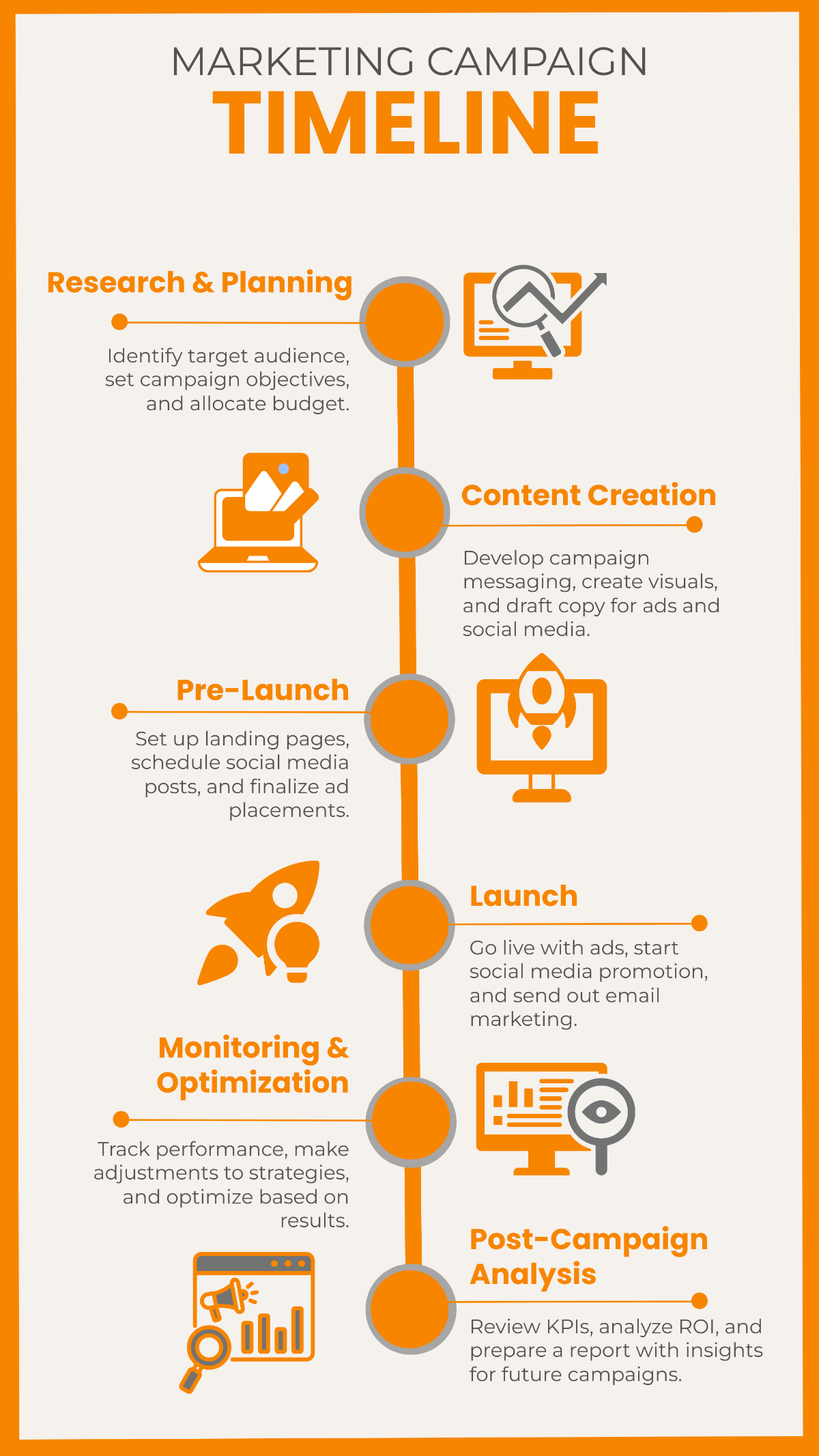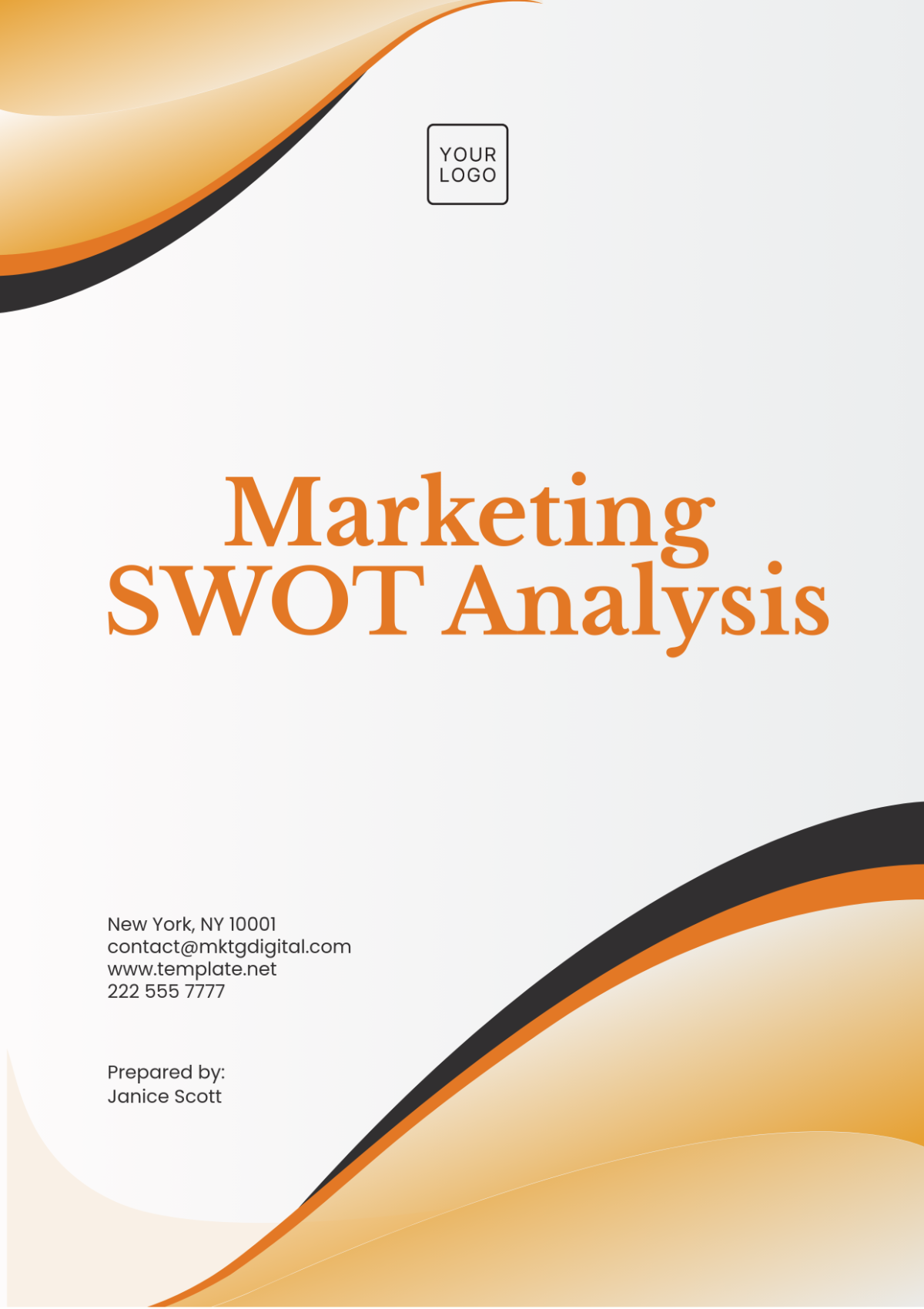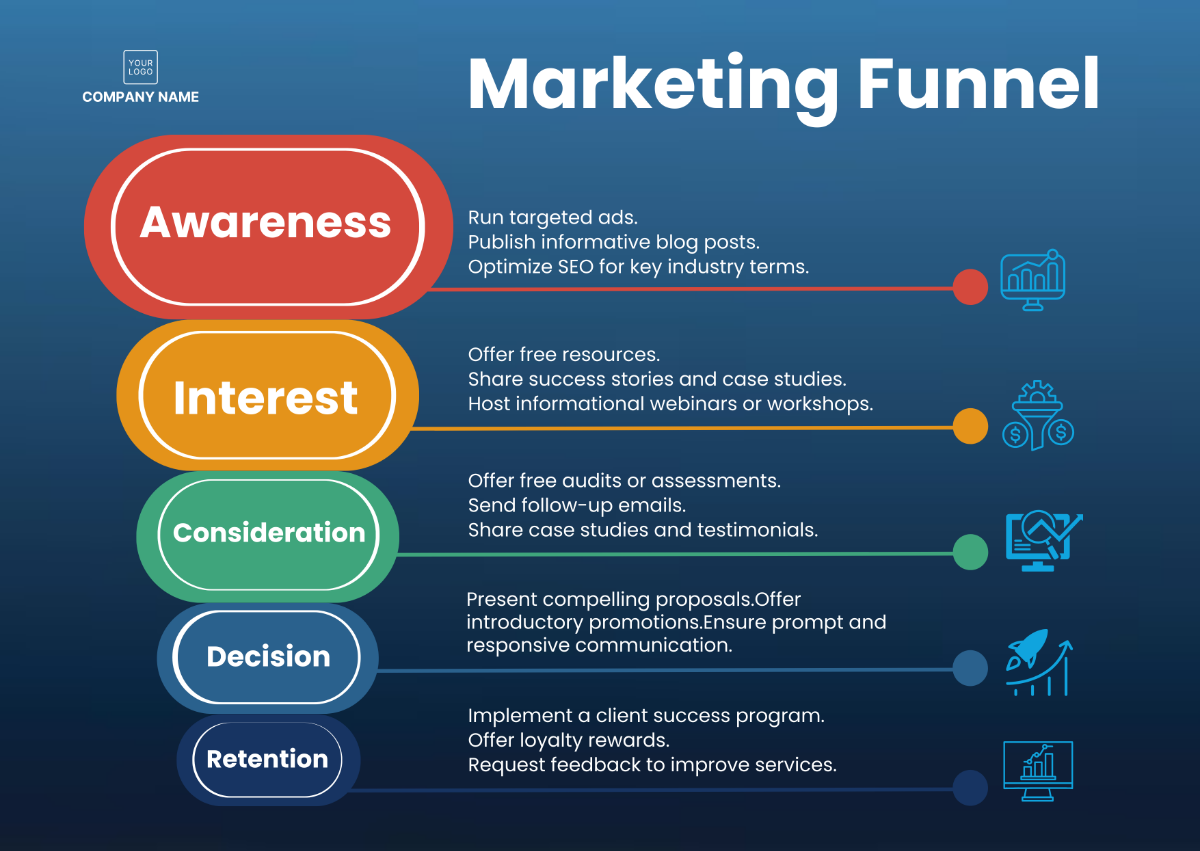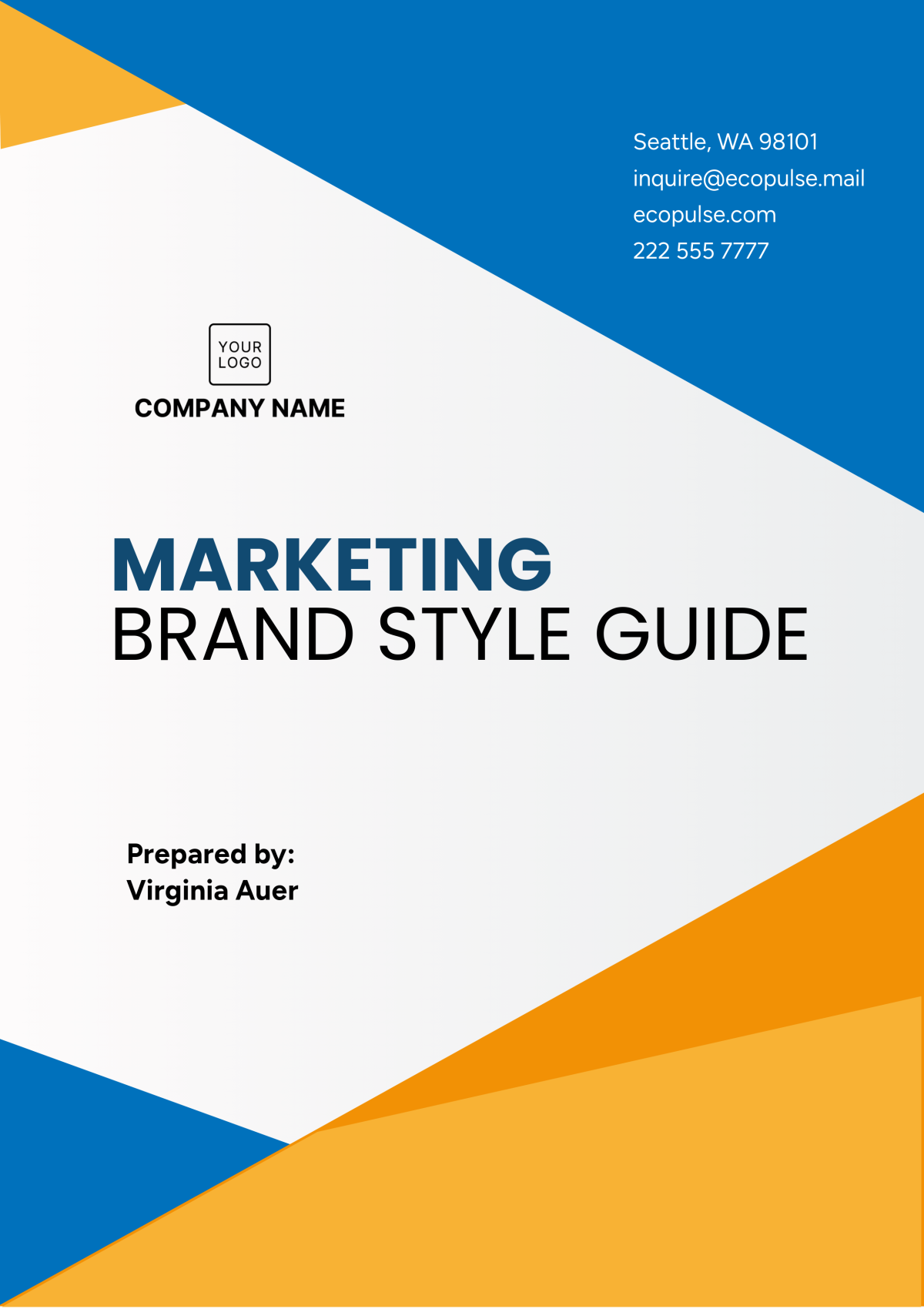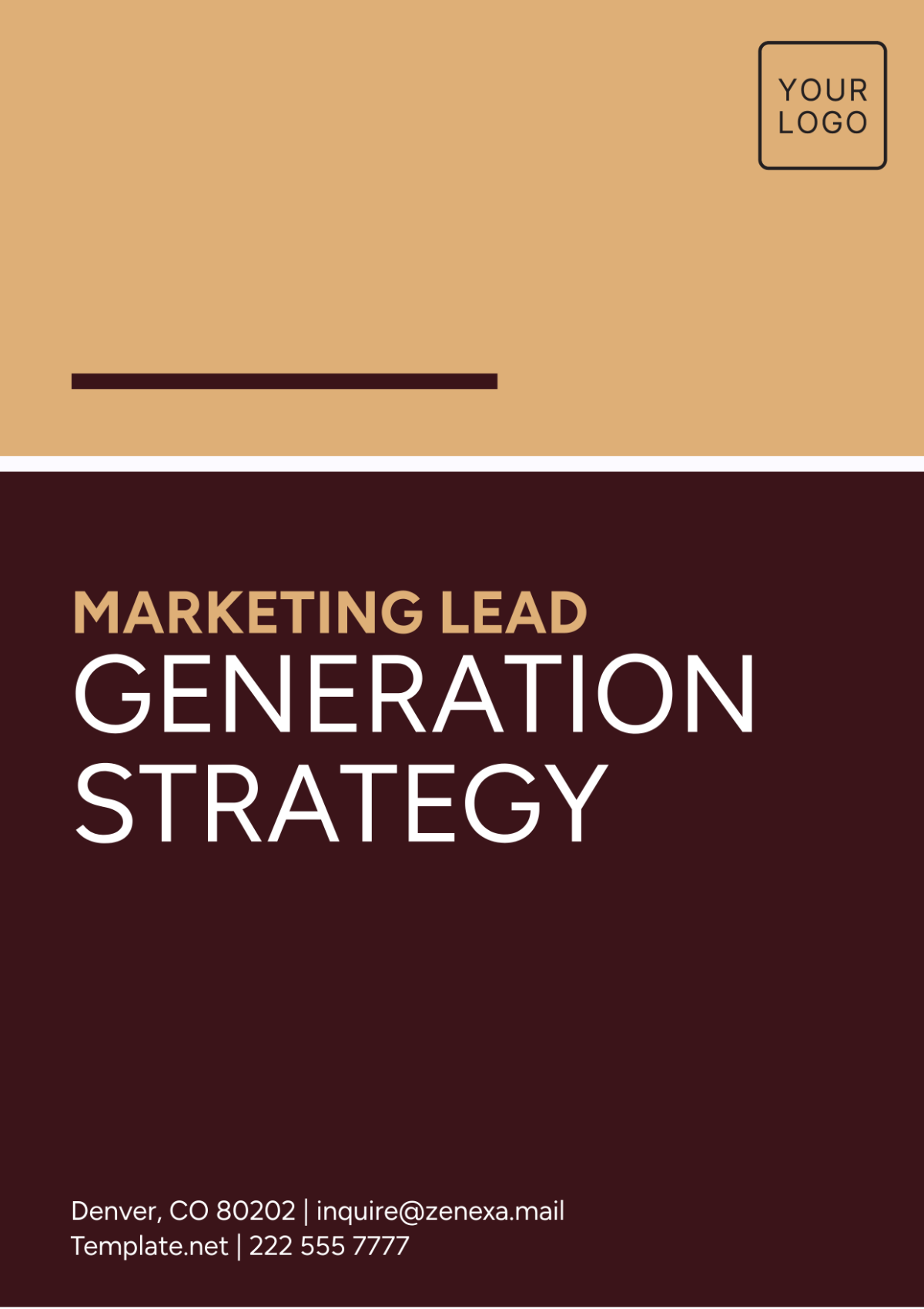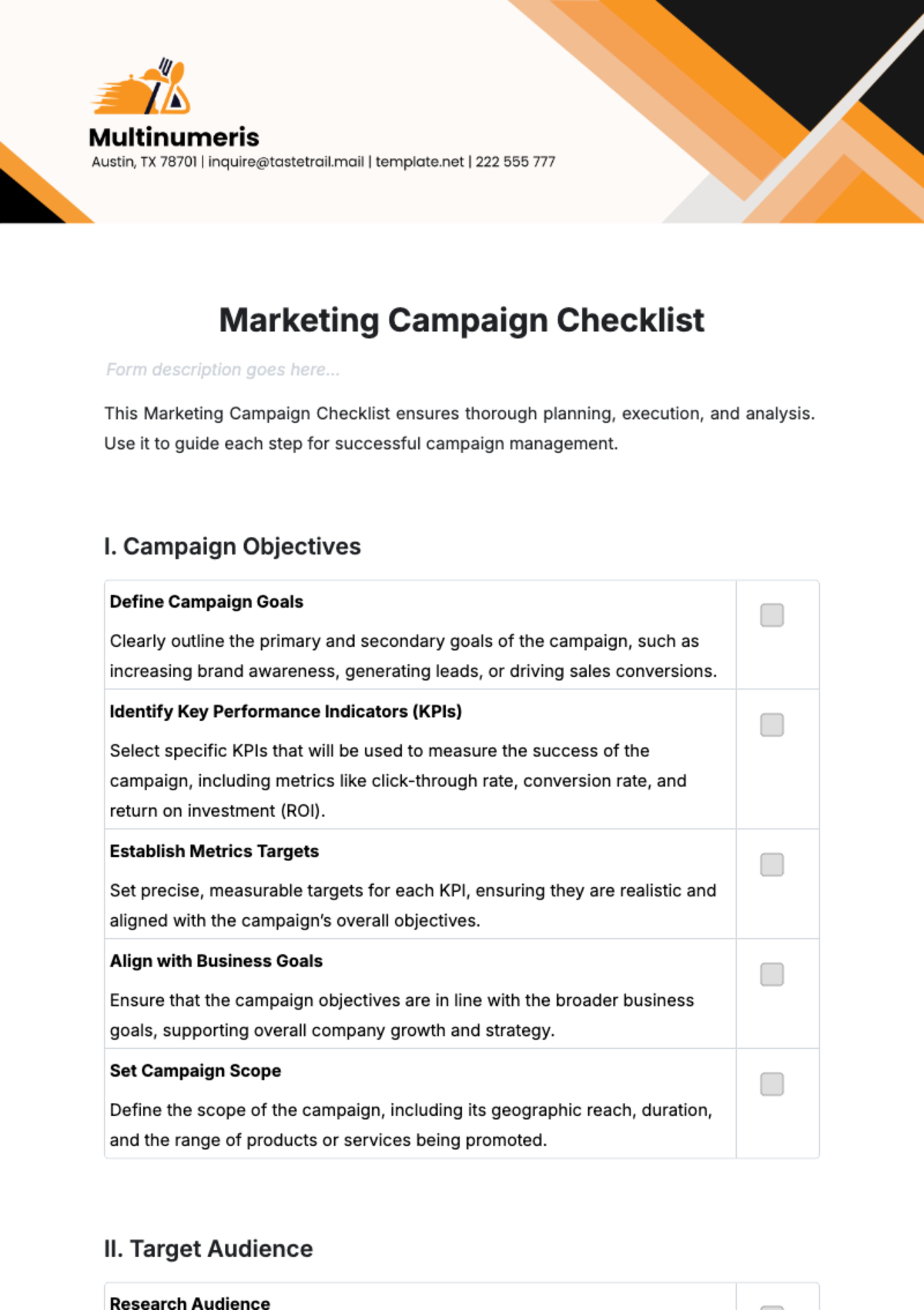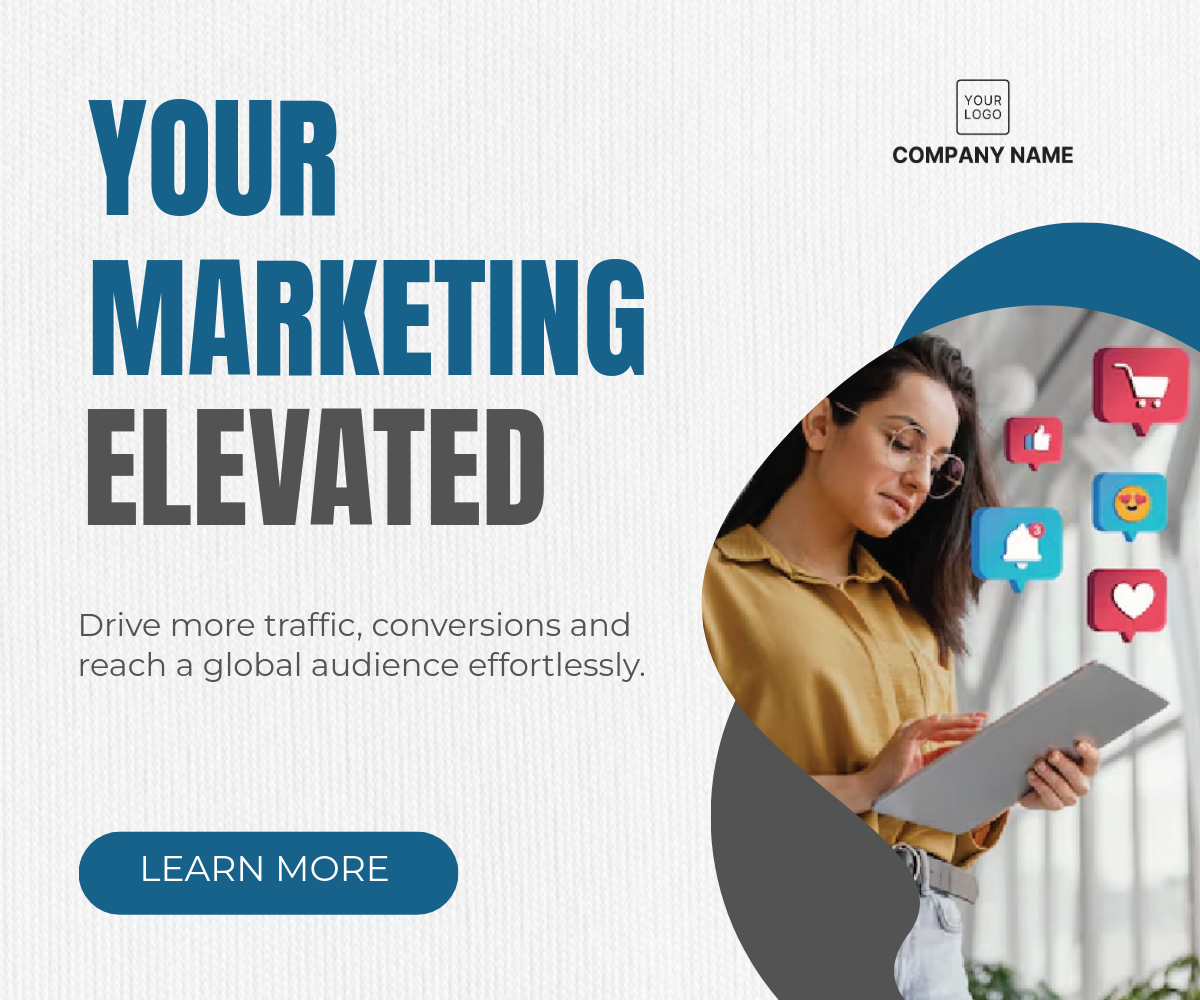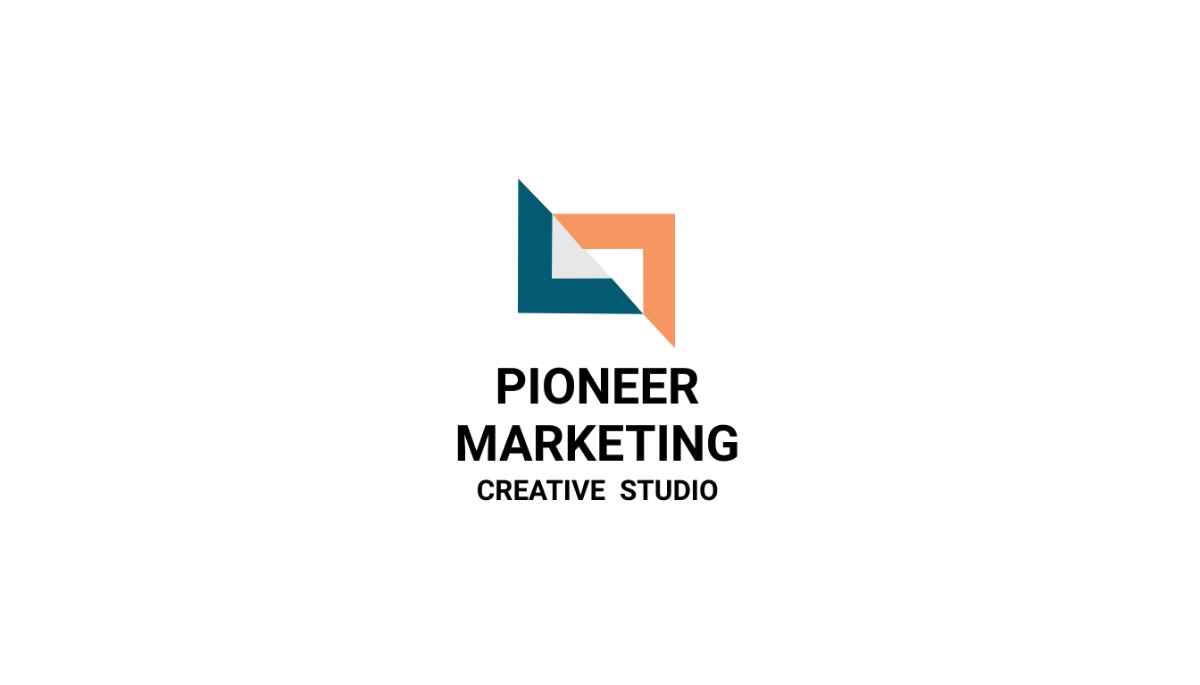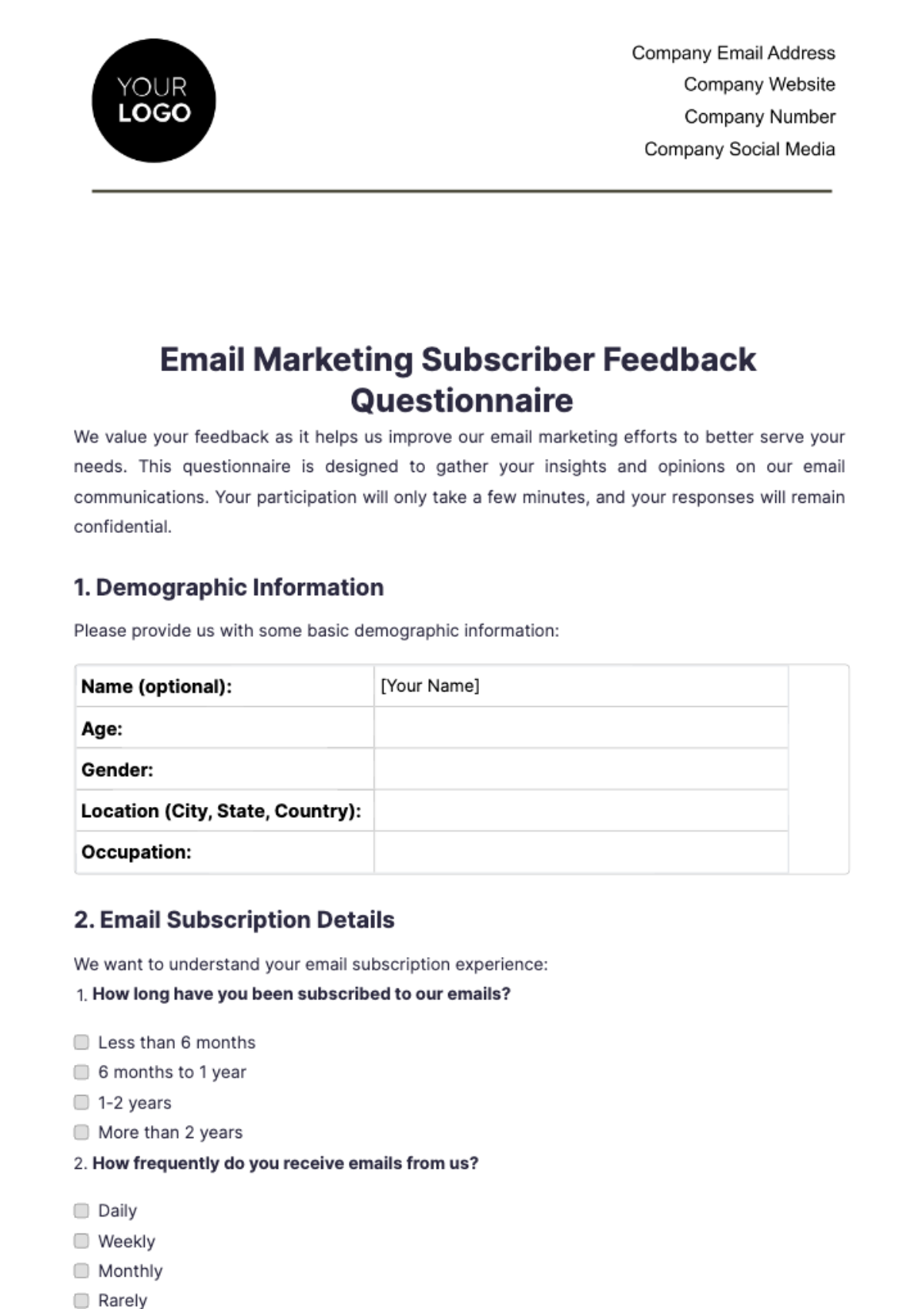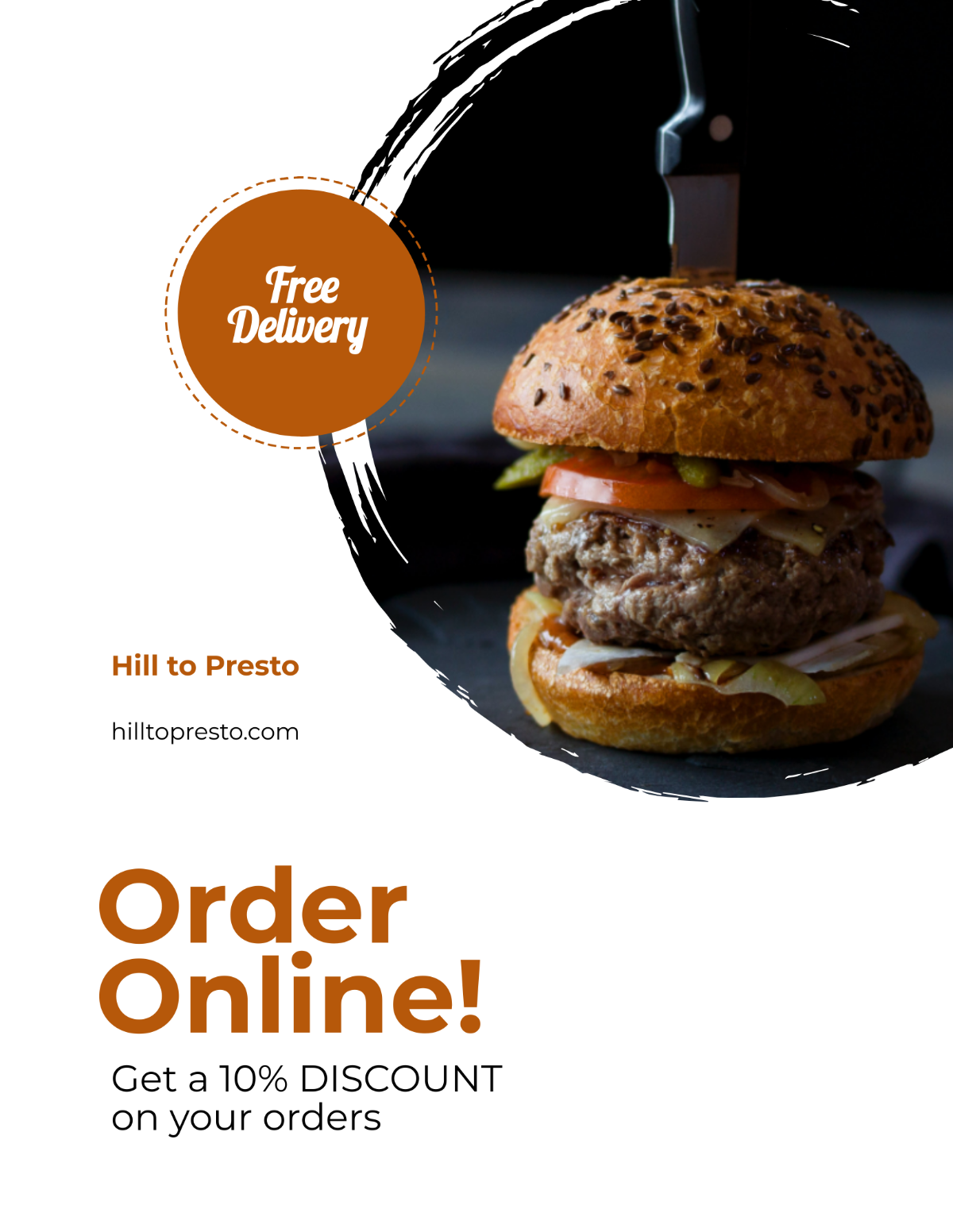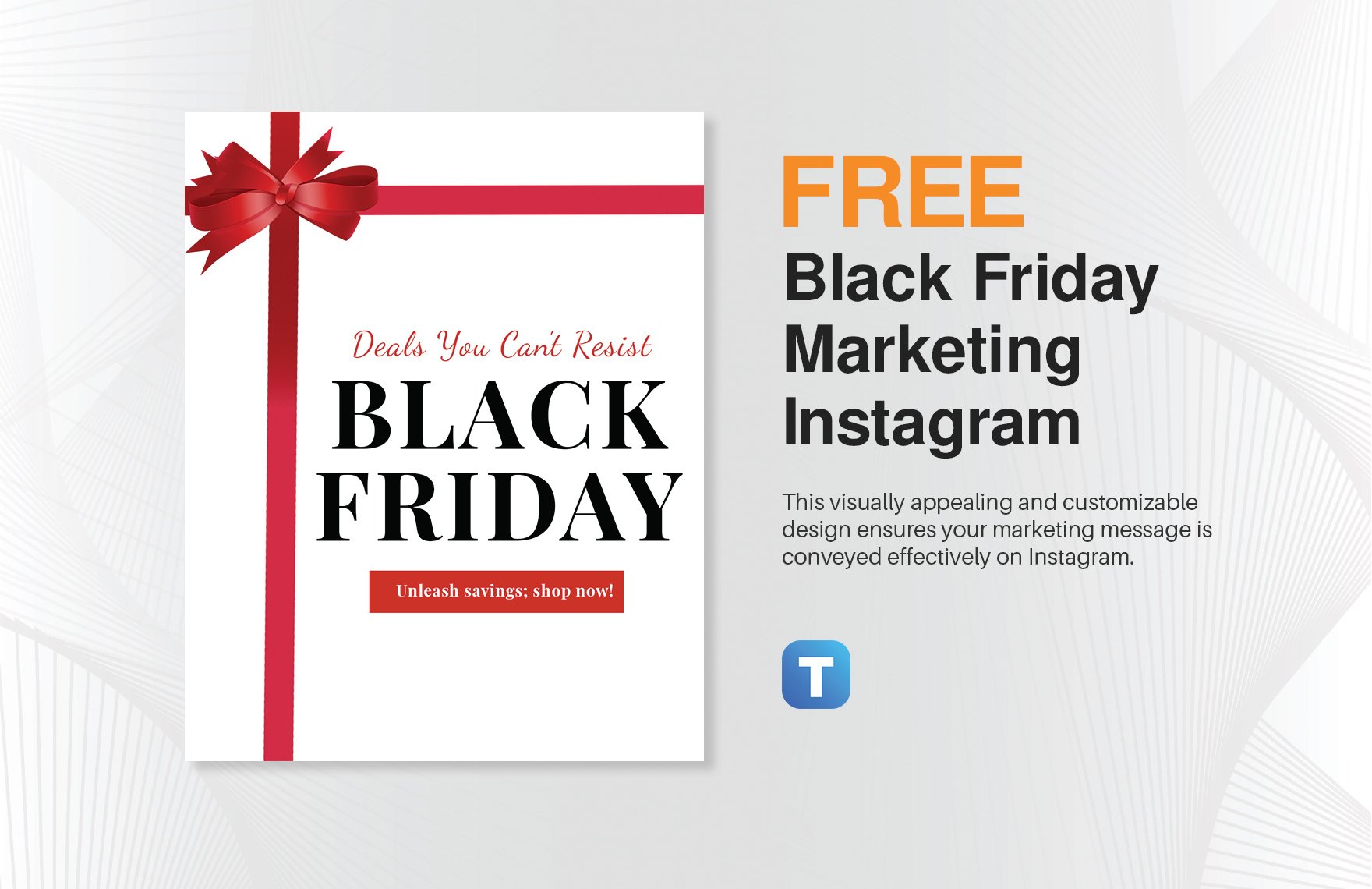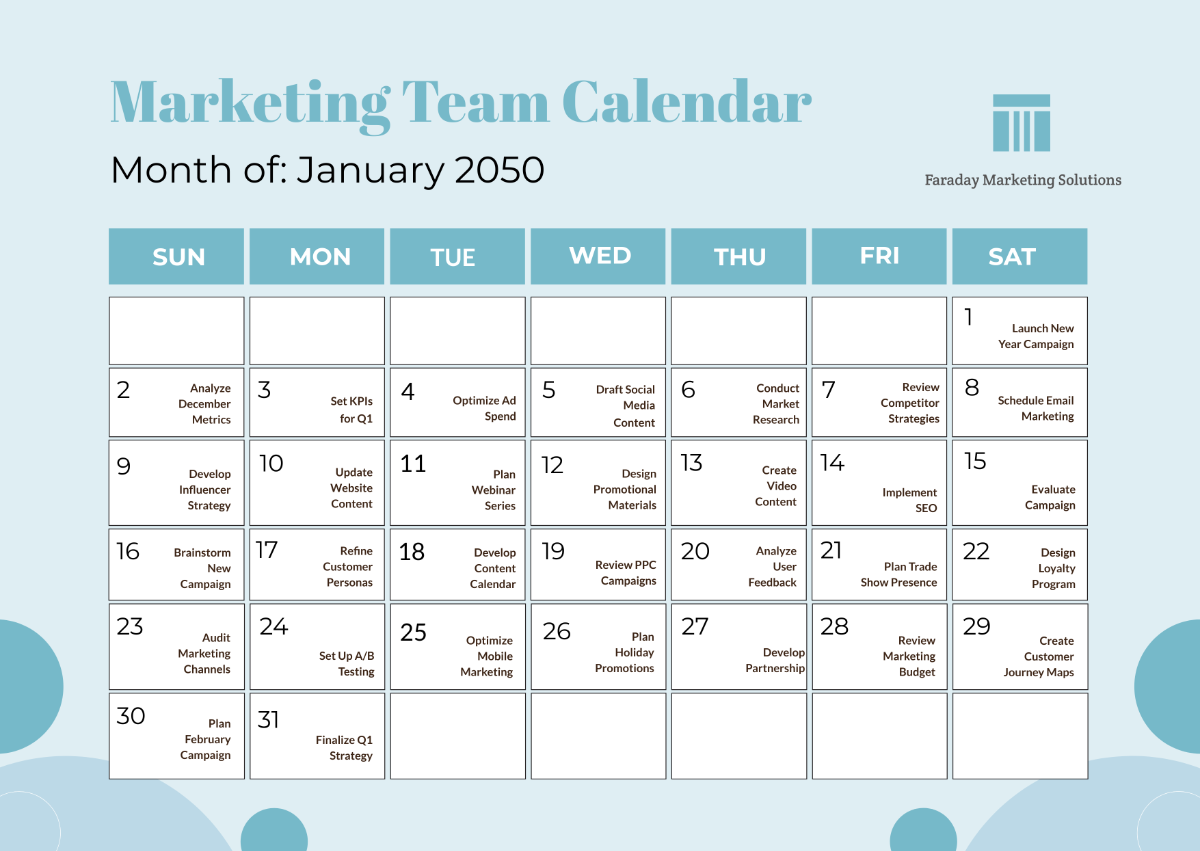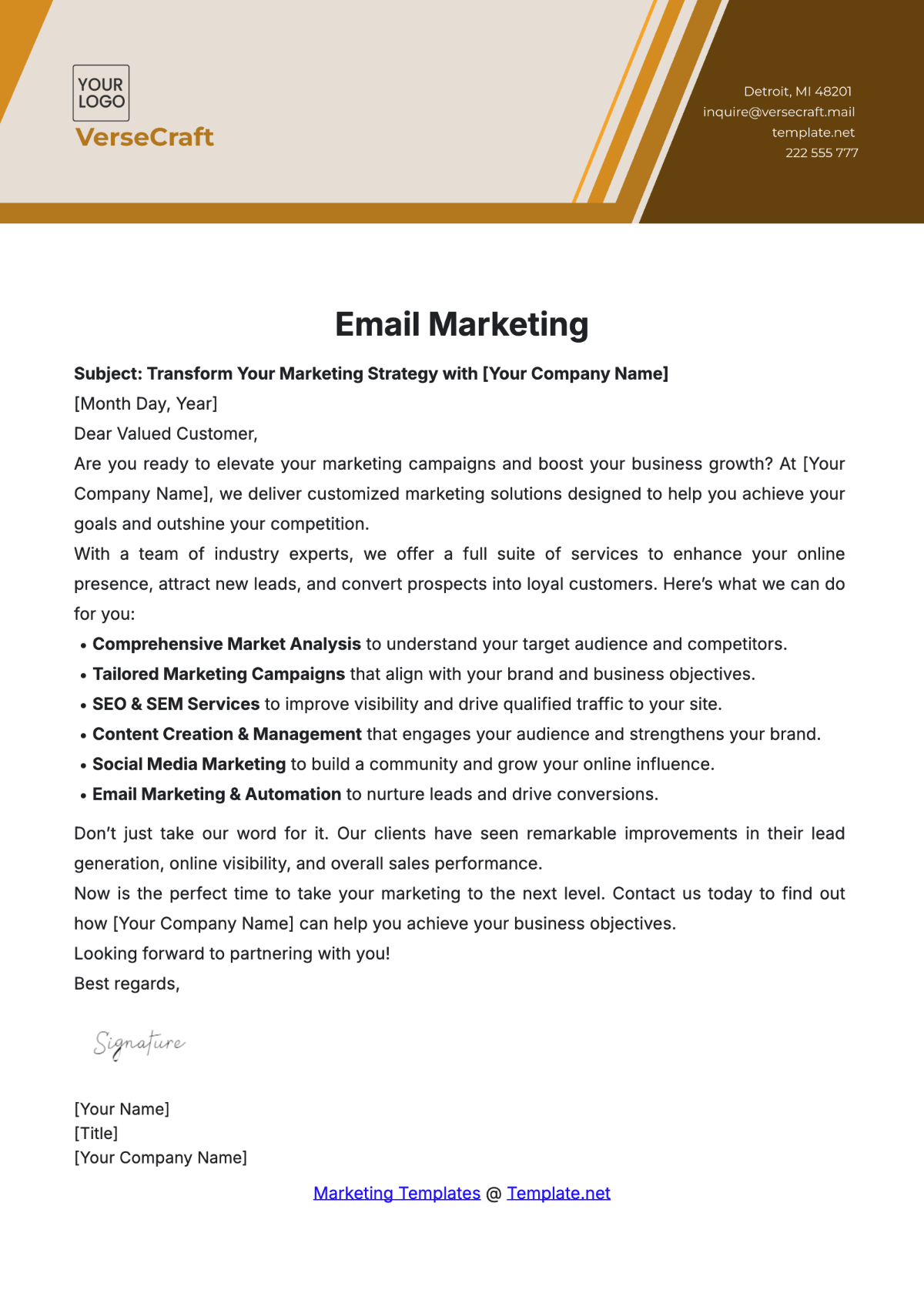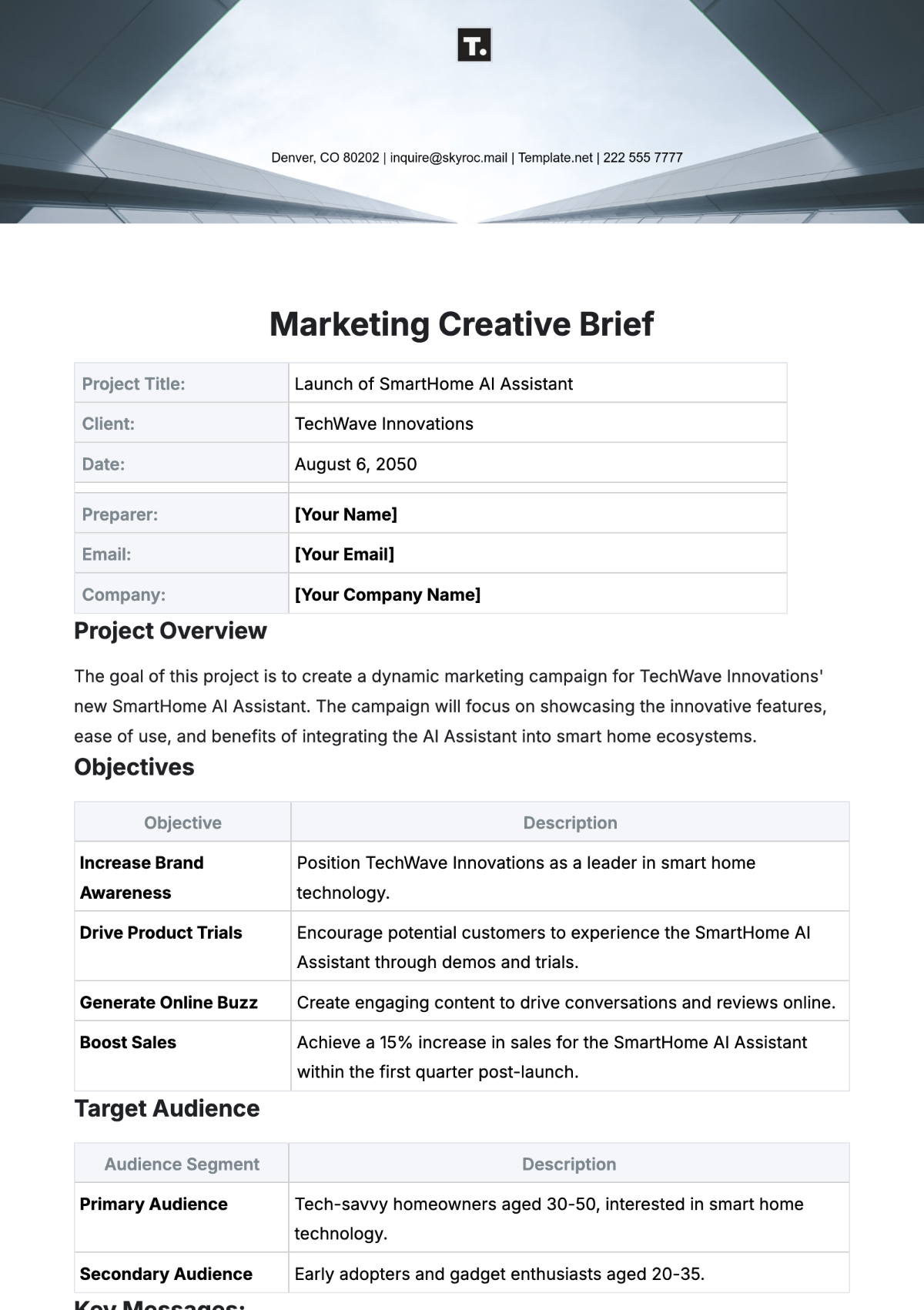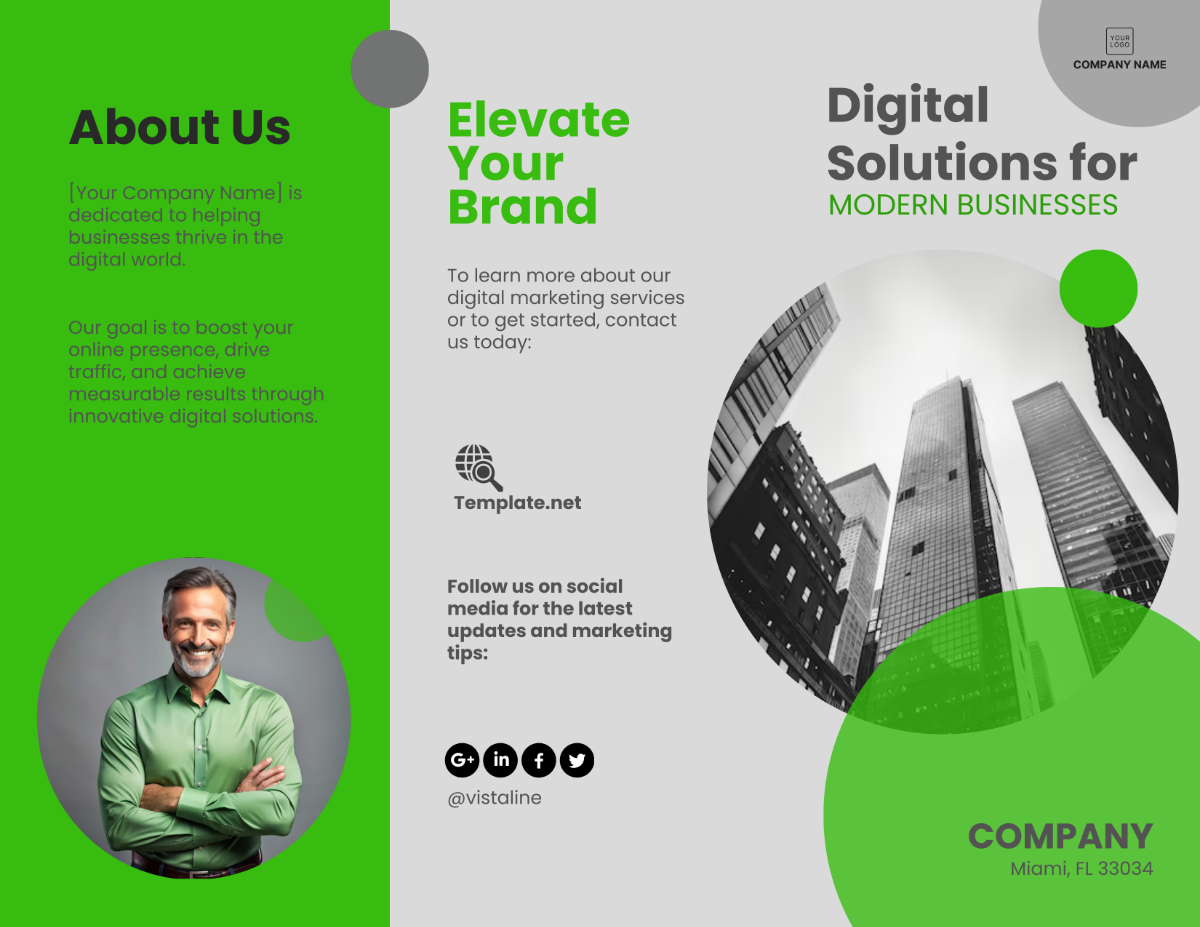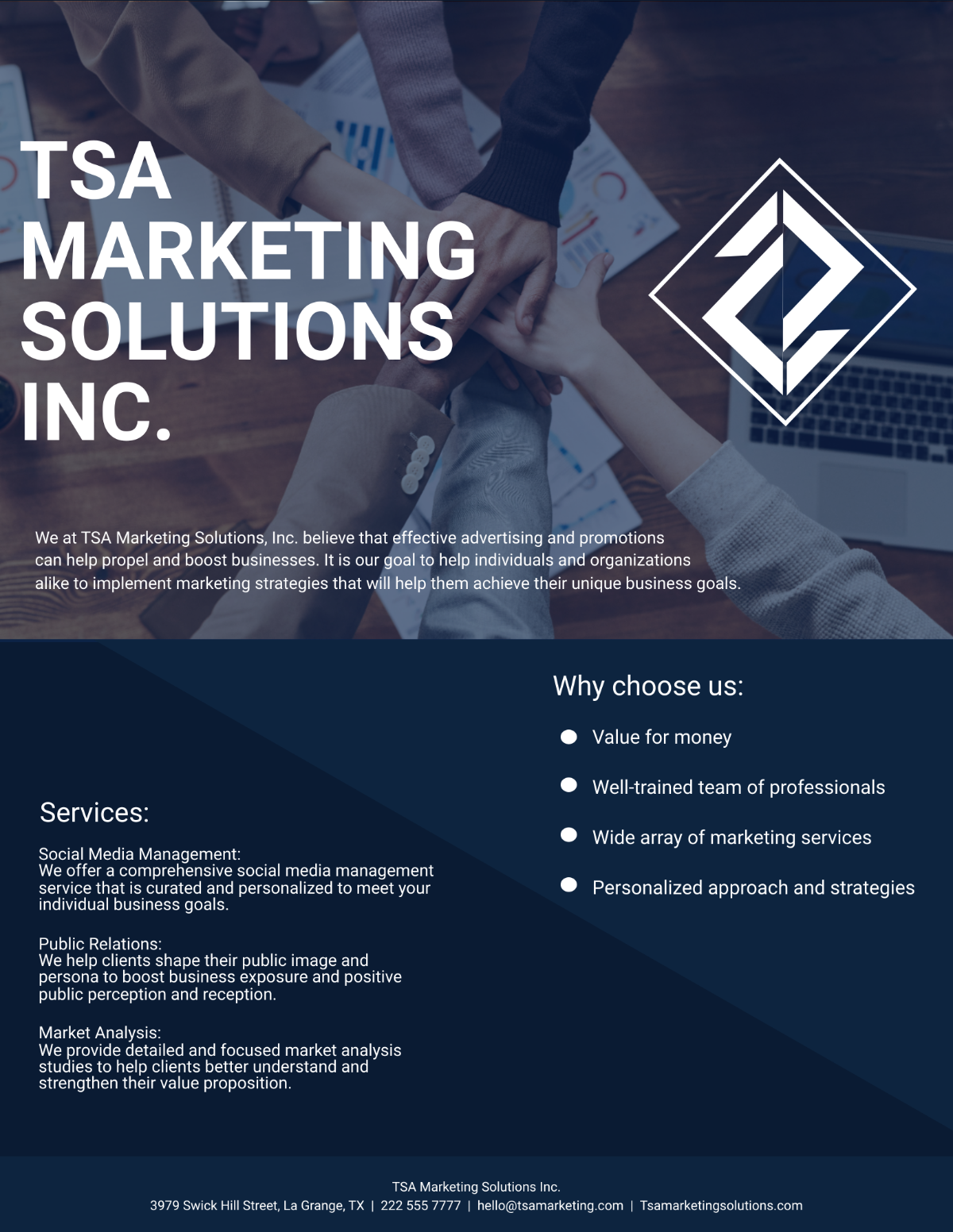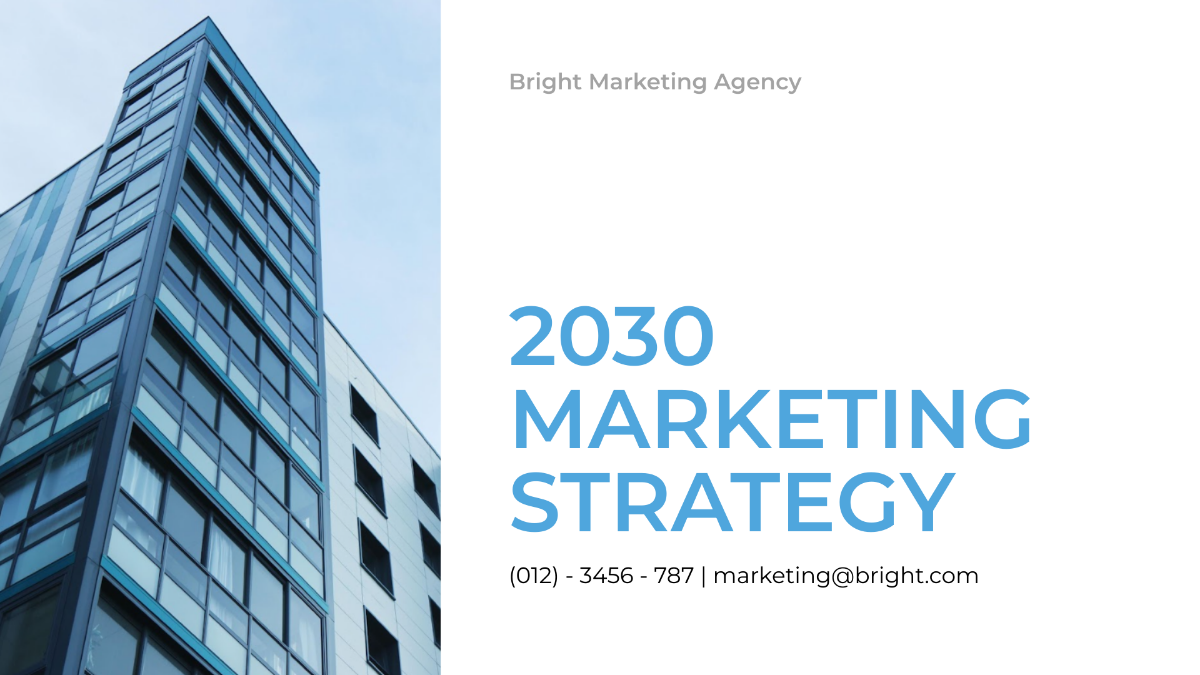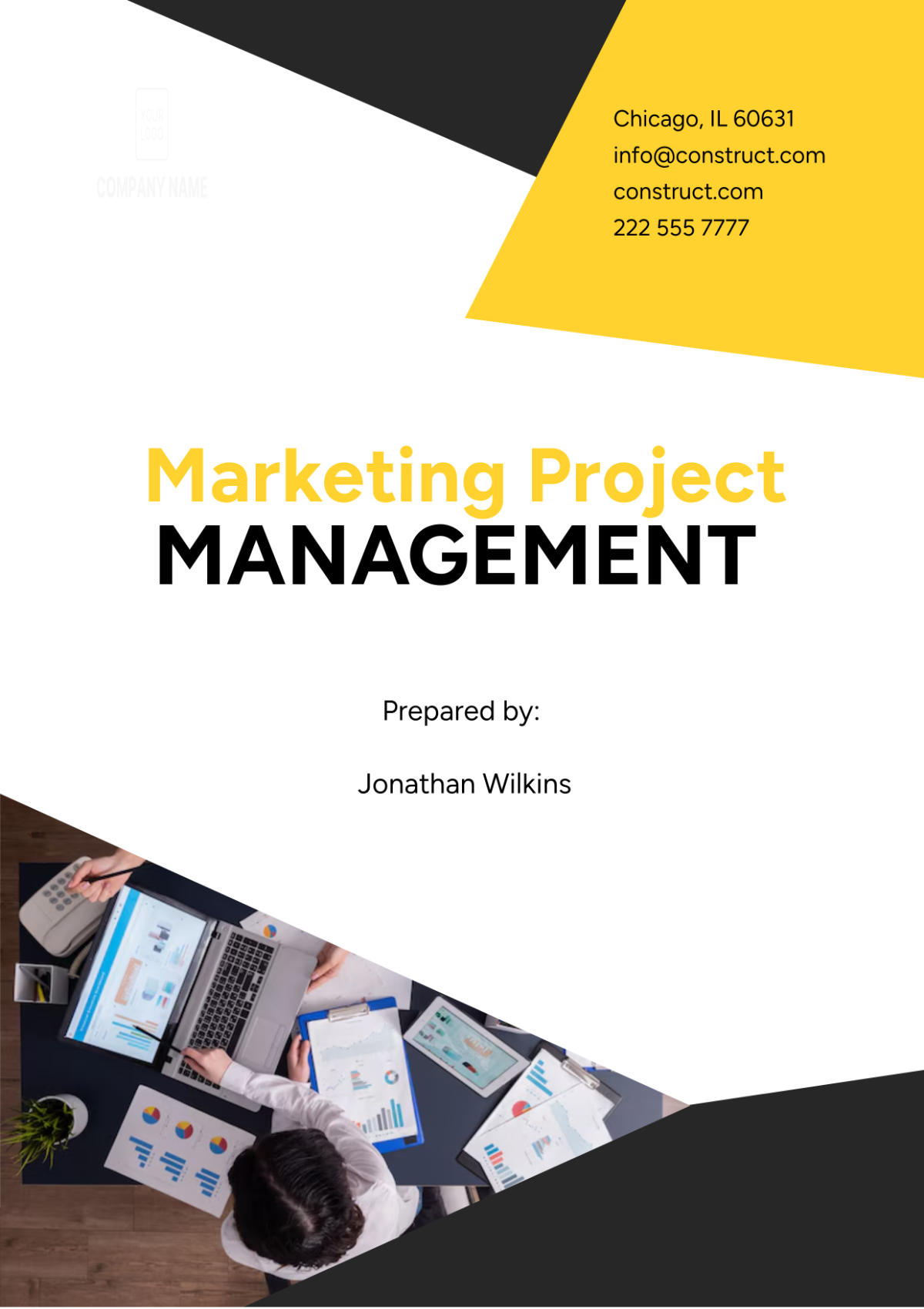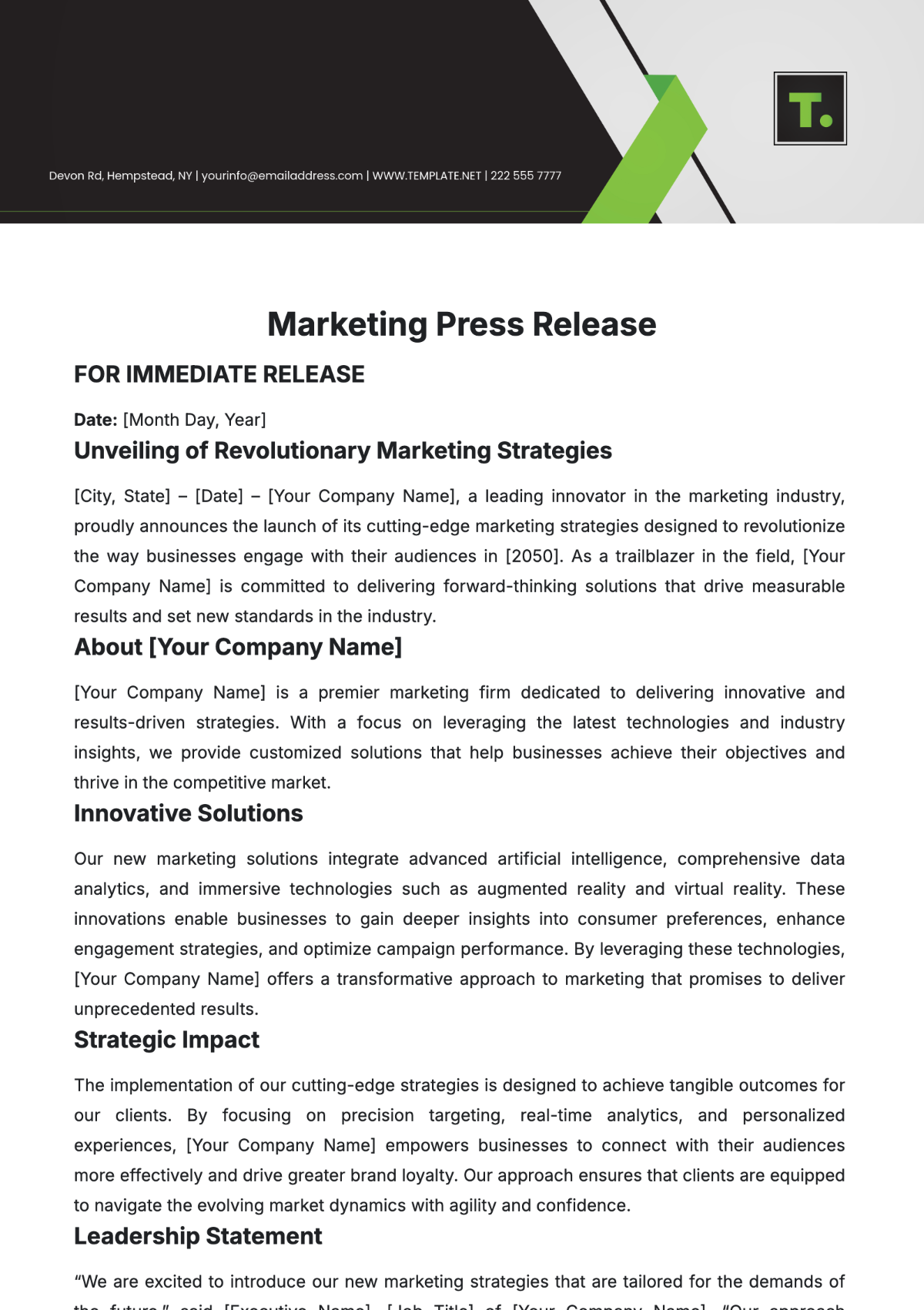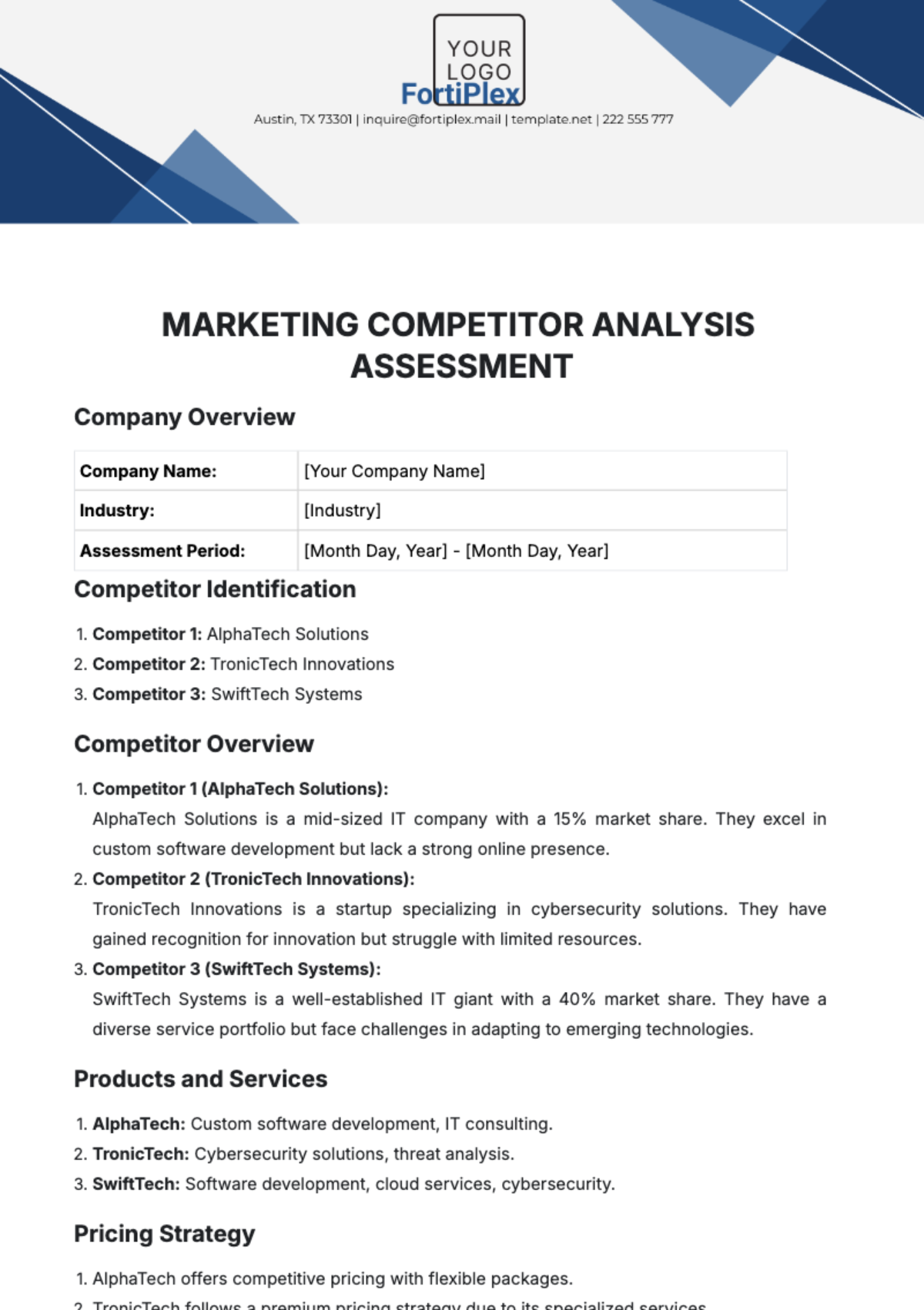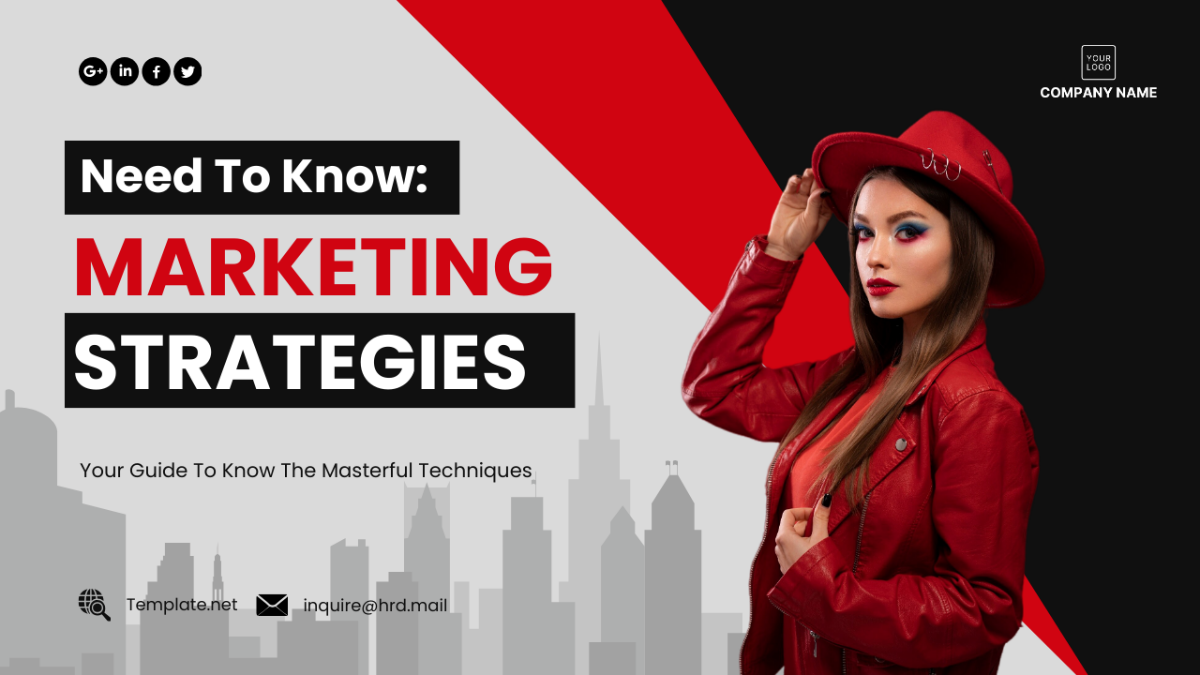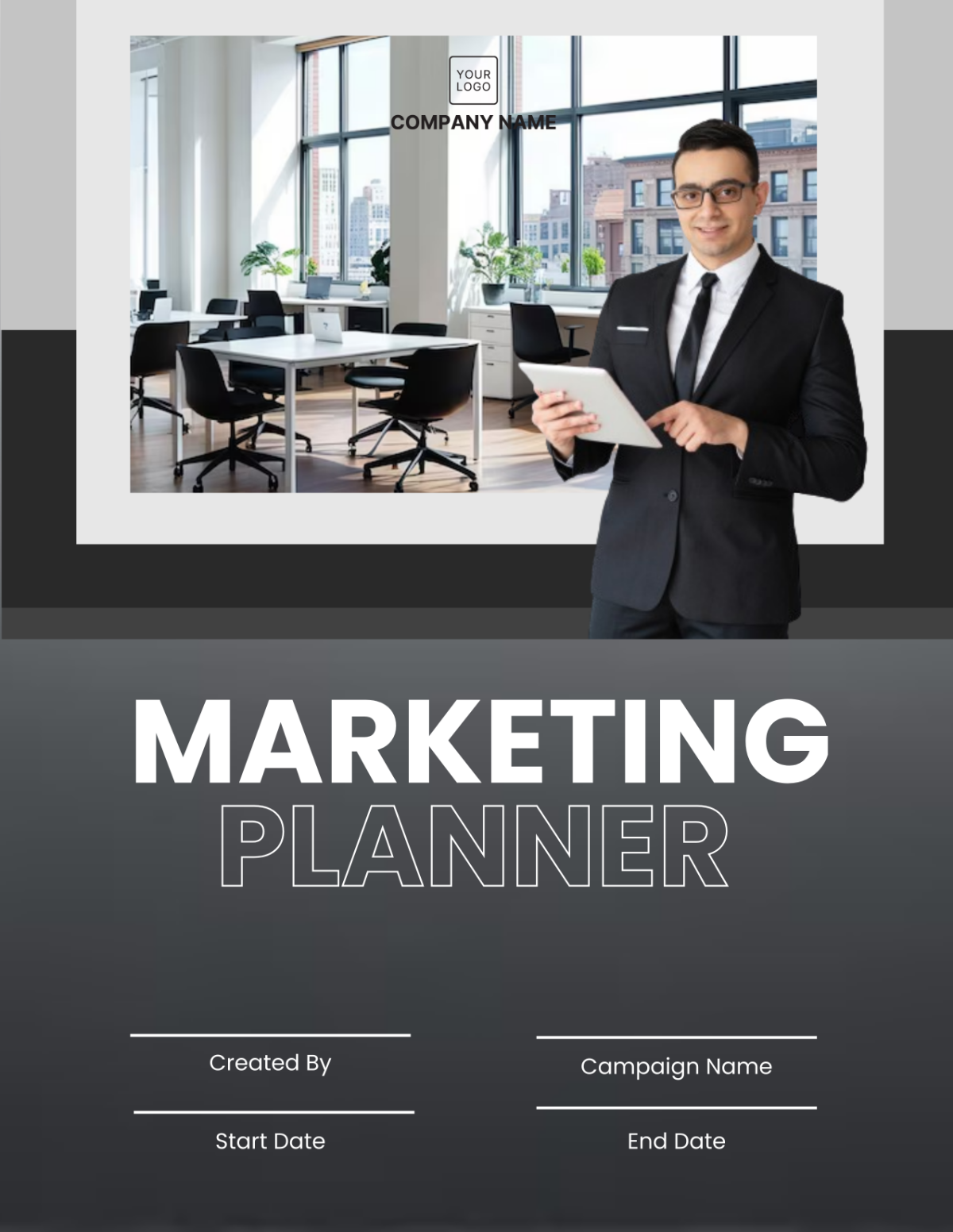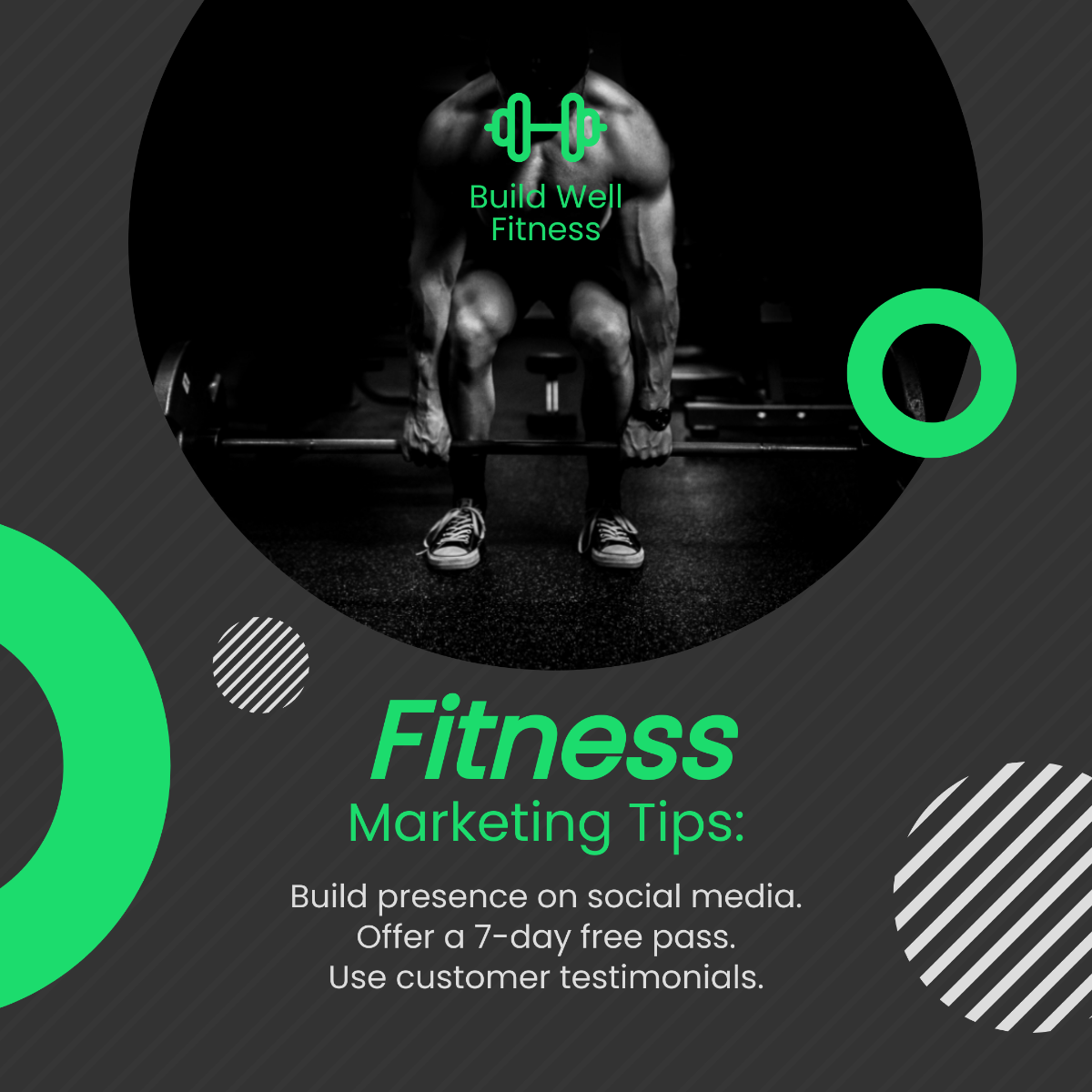Advertising Multi-Channel Media Placement Strategy
I. Executive Summary
A. Objective: Launch [Your Company Name] 's innovative["Vision 2050" eyewear collection, targeting a blend of style and technology enthusiasts, with an emphasis on sustainable practices.
B. Target Audience: Tech-savvy, environmentally conscious adults aged [25-45] with disposable income and an interest in fashion and technology.
C. Key Channels:
Digital: Social media, search engines, email marketing.
Traditional: Television, print media, outdoor advertising.
Emerging: Augmented reality experiences, influencer collaborations.
Budget: $800,000 with a projected ROI of $2.4M.
II. Campaign Objectives
Before diving into our multi-channel media placement strategy, it's crucial to establish clear campaign objectives that align with our business goals and market aspirations. Our objectives include achieving ambitious sales targets, capturing significant market share, boosting brand awareness, and fostering engagement with our audience across digital platforms.
Sales Target: Sell 15,000 units in Q2.
Market Share Goal: Capture 20% of the eco-friendly eyewear market by Q4.
Brand Awareness: Generate 10 million impressions across all channels in six months.
Engagement: Achieve a 5% engagement rate on digital platforms.
III. Target Audience Analysis
Understanding our target audience is paramount to crafting effective marketing messages and selecting the most appropriate channels for engagement. In this section, we delve into comprehensive demographic, psychographic, and behavioral analysis to gain insights into the preferences, needs, and pain points of our target audience.
Demographics | Description |
|---|---|
Age | 25-45 years |
Psychographics | Description |
|---|---|
Interests | Technology, fashion, sustainability |
Behavioral | Description |
|---|---|
Online Behavior | Active on social media, engage with tech and fashion content |
IV. Market Research and Analysis
In this section, we conduct in-depth market research and analysis to evaluate the competitive landscape, identify emerging trends, and uncover opportunities for growth. By leveraging data-driven insights, we aim to make informed decisions regarding channel selection, messaging strategies, and campaign execution to maximize our advertising effectiveness.
A. Industry Trends:
A surge in demand for tech-integrated fashion accessories.
Increased consumer awareness about sustainable practices in manufacturing.
B. Competitive Landscape:
Key competitors: EcoVision, TechStyle, GreenOptics.
Unique Selling Proposition (USP) of "Vision 2050": Integration of smart technology in eco-friendly materials.
C. SWOT Analysis:
Strengths: | Innovative product, strong brand ethos. |
Weaknesses: | |
Opportunities: | |
Threats: |
V. Media Channel Strategy
In this section, we outline our comprehensive media channel strategy, encompassing digital, traditional, and emerging channels to effectively reach our target audience. By strategically allocating our budget across various platforms and tailoring our content to each channel's strengths, we aim to maximize brand exposure and engagement while achieving our campaign objectives.
A. Digital Channels:
Social Media: | Focus on Instagram, Twitter, and LinkedIn. |
Content Strategy: | |
Budget Allocation: |
B. Google Ads:
Strategy: | Targeted ads based on search behavior related to fashion and technology. |
Budget Allocation: |
C. Traditional Channels:
Television:
Selection: | Prime time slots on tech and lifestyle channels. |
Content: | |
Budget Allocation: |
Print Media:
Selection: | Fashion and technology magazines. |
Content: | |
Budget Allocation: |
D. Emerging Channels:
Augmented Reality Experiences:
Strategy: | Interactive AR ads in urban hotspots. |
Budget Allocation: |
Influencer Collaborations:
Selection: | Influencers with a tech-savvy, eco-conscious following. |
Content: | |
Budget Allocation: |
VI. Content Strategy
In this section, we delineate our content strategy, focusing on conveying key messages of innovation, sustainability, and quality across all channels. With a consistent tone and visually compelling imagery, we aim to captivate our audience and reinforce our brand identity while adapting content formats to suit the unique characteristics of each channel.
Key Messages: Cutting-edge technology, sustainable fashion, premium quality.
A. Creative Direction:
Tone: Inspirational, innovative, responsible.
Visuals: High-quality images showcasing the sleek design of interactive AR content.
B. Adaptation Across Channels:
Digital: Engaging, shareable content, short-form videos.
Traditional: Storytelling through visuals, clear and concise messaging.
Emerging: Immersive experiences that highlight product USPs.
VII. Budget Allocation
Before diving into the intricacies of a multi-channel media placement strategy, it's crucial to establish a clear budget allocation framework. This section lays the financial foundation for the entire advertising endeavor, determining how resources will be distributed across diverse channels. By carefully considering factors such as audience reach, channel effectiveness, and campaign objectives, advertisers can optimize spending to maximize impact and achieve their desired outcomes within set budget constraints.
Channel | Allocation | Amount | Expected ROI |
|---|---|---|---|
Digital (Total) | 40% | $320,000 | $960,000 |
VIII. Implementation Timeline
In the dynamic world of advertising, timing is paramount. This section outlines the implementation timeline, guiding the orchestration of advertising efforts across multiple channels. From campaign kickoff to launch, each phase is meticulously planned to ensure seamless execution and maximum impact. By adhering to a structured timeline, advertisers can effectively coordinate activities, allocate resources efficiently, and capitalize on strategic opportunities, ultimately driving success in their advertising endeavors.
Phase | Date | Activity |
|---|---|---|
Research | [Month, Day, Year] - [Month, Day, Year] | Market analysis, audience profiling |
IX. Measurement and Analytics
In this section, we establish key performance indicators (KPIs) tailored to each channel, enabling us to effectively measure the success of our advertising efforts. By utilizing a range of analytics tools and reporting formats, we ensure timely and comprehensive evaluation of campaign performance across digital, traditional, and emerging channels, facilitating data-driven decision-making and optimization.
A. KPIs:
Digital: Click-through rate (CTR), engagement rate, conversion rate.
Traditional: Reach, frequency, brand recall.
Emerging: Engagement in AR experiences, influencer campaign reach.
B. Tools:
Digital: Google Analytics, Social Media Insights.
Traditional: Nielsen Ratings, Brand Tracking Surveys.
Emerging: AR Interaction Metrics, Influencer Analytics Platforms.
C. Reporting:
Frequency: Weekly for digital, monthly for traditional and emerging.
Format: Comprehensive dashboard with real-time data for digital, compiled reports for traditional and emerging.
X. Risk Management and Contingency Planning
In this critical section, we address potential risks that could impact the success of our advertising efforts and outline proactive measures to mitigate them. By implementing robust risk management strategies and contingency plans, we aim to safeguard our campaign against unforeseen challenges and maintain agility in responding to changing market dynamics, ensuring resilience and effectiveness in achieving our objectives.
Risks Identified: Rapid technology changes, low engagement on traditional channels, and supply chain disruptions.
Mitigation Strategies: Flexible contracts with media vendors, continuous market trend monitoring, and diversified supplier base.
Contingency Plans: Shift budget to higher performing channels, adapt messaging to current technology trends, and alternative sourcing strategies.
XI. Conclusion
The "Vision 2050" campaign for [Your Company Name] Eyewear is a comprehensive approach that blends innovative technology with sustainable fashion. This strategy is designed to not only meet sales targets but also establish a strong brand presence in a competitive market. Continuous monitoring and adaptability are key to the success of this campaign, ensuring that [Your Company Name] remains at the forefront of the eyewear industry.


